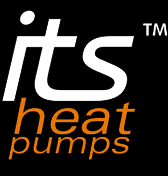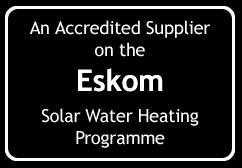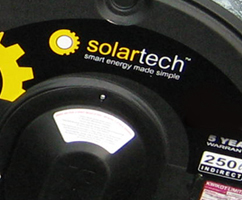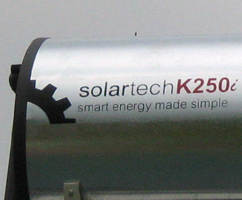

March 7th 2011
New data out on Monday by growth partnership company Frost & Sullivan (F&S) finds phenomenal growth in SA's solar water heater market, which has expanded to include more than 400 suppliers from less than 20 in 1997. F&S said that, in line with global trends, SA's domestic water-heating market was moving away from traditional water-heating methods, such as conventional geysers, towards more energy-efficient measures, namely solar water heaters. The group attributed the development to domestic water-heating accounting for about 40% of a household's electricity bill. Of SA's national electricity consumption, 18% was allocated for the heating of water, for residential, commercial, and industrial use, it said. "Eskom's load-shedding power crisis of 2007-08 resulted in a raised awareness of solar water heating as the general public demanded hot water during times of load-shedding, and Eskom advocated the saving benefits that this mechanism could provide," said Dominic Goncalves, F&S's energy and power research analyst. Eskom subsequently developed a demand-side management programme, propagating solar water heaters as a prime mechanism to conserve energy off the strained national grid. The Eskom rebate programme was established, and a target set for the installation of one million solar water heaters by 2014. "The rationale was that such demand-side management could relieve up to 578 gigawatt hours of electricity from the grid, the equivalent of building a 2,000 megawatt power station," said Goncalves. "Furthermore, solar water heaters are often used during peak times (early morning and evening), the precise time when strained power stations are struggling to produce the required peak-time power," he said. However, according to F&S, between 2007 and 2010 the market experienced volatile growth, plagued by malfunctioning products, fly-by-night companies, and incorrect installation and application of the products. Nevertheless, market growth continued, albeit slower than expected. Goncalves pointed to a negative reputation associated with solar water heaters, due to conflicting information and incorrect product application. The market however, began to stabilise during the second half of 2010 as many fly-by-night companies selling cheap, imported Chinese products out-the-box left the market or changed their strategies. As a result, market development "has proceeded in a more ordered manner", according to F&S, who added, however, that this slow-down in sales was misleading. "New building codes have been announced that will change the face of the market, and conventional plumbing as we know it. When the new building codes are officially instated, new buildings or those undergoing refurbishments will be required to account for at least 50% of their hot water consumption to be generated by energy efficient methods, for example solar water heaters or heat pumps," the group said. Looking ahead, Goncalves said: "The key challenge facing the development of the solar water heater market is installation. Solar water heaters require a mix of plumbing and electrical skills, as well as unique solar installation skills, which must be learned." F&S said that solar water heater installation was about four times more labour intensive than installing a conventional geyser. In addition to this, many skills variables of installing products in different applications needed to be acquired, some of which could only be learned practically. F&S said that installation skills remained the largest challenge. "Ultimately, the solar water heater market is preparing for a second, high growth phase that will be larger than the previous growth surge in SA. The key is to address the gaps in the market and be ready to support the change," it concluded. Source: businesslive.co.za : March 7th 2011 |




